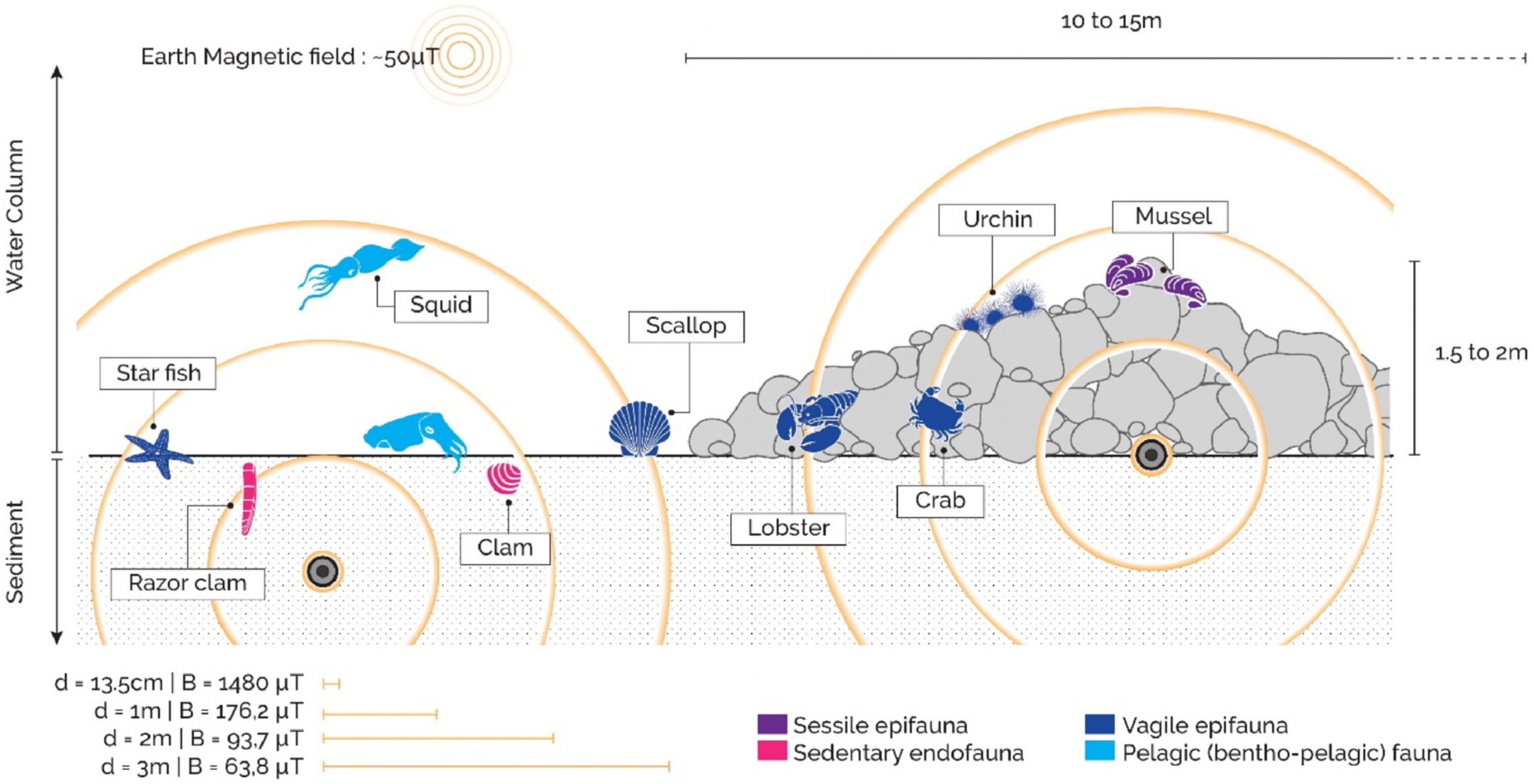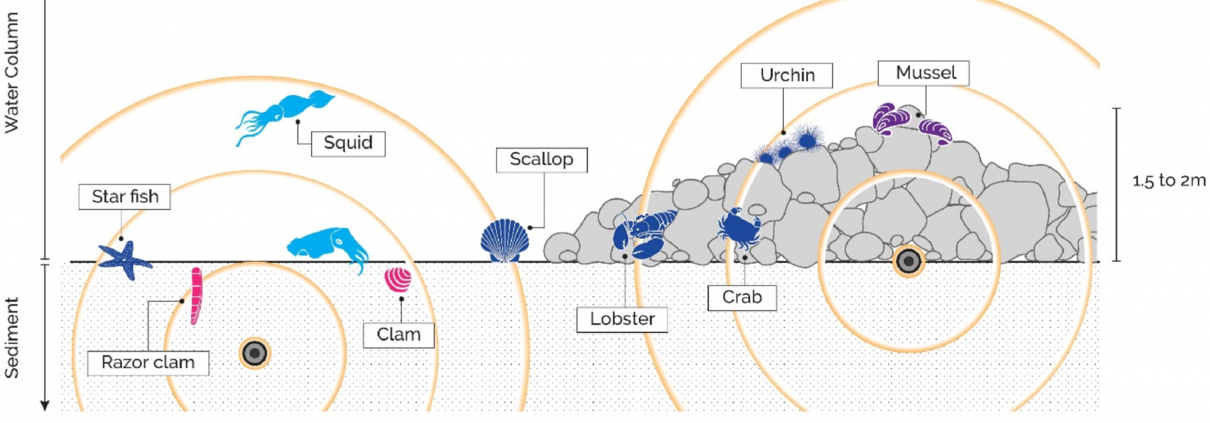A current synthesis on the effects of electric and magnetic fields emitted by submarine power cables on invertebrates
Abstract
The goal of clean renewable energy production has promoted the large-scale deployment of marine renewable energy devices, and their associated submarine cable network. Power cables produce both electric and magnetic fields that raise environmental concerns as many marine organisms have magneto and electroreception abilities used for vital purposes. Magnetic and electric fields’ intensities decrease with distance away from the cable. Accordingly, the benthic and the sedimentary compartments are exposed to the highest field values. Although marine invertebrate species are the major fauna of these potentially exposed areas, they have so far received little attention. We provide extensive background knowledge on natural and anthropogenic marine sources of magnetic and electric fields. We then compile evidence for magneto- and electro-sensitivity in marine invertebrates and further highlight what is currently known about their interactions with artificial sources of magnetic and electric fields. Finally we discuss the main gaps and future challenges that require further investigation.

Fig. 2. General distribution of some invertebrate species according to the theoretical values of magnetic fields emitted by 225 kV buried (1 m) and unburied single-conductor cables, energised with an intensity of 1000 A (diameter: 27 cm). Magnetic field intensities were calculated with the following formula: B = (µ.µ0)/(2πr) B is the magnetic induction (T), μ is the relative magnetic permeability of the medium, μ0 is the vacuum permeability (4π・10−7 V s A−1 m−1), I is the current intensity (A) and r is the distance from the centre of the wire (m) (formula from Otremba et al., 2019).
Highlights
- Submarine power cables produce both magnetic and electric fields.
- Marine invertebrate species inhabit the benthic or sediment compartment where cables are laid or buried.
- Evidence shows magneto and electro-sensitivity in some invertebrates but their response to artificial fields is poorly known.
- Invertebrate species are likely to experience the highest and longest exposures and should be prioritised in future studies.
References
Albert L., Deschamps F., Jolivet A., Olivier F., Chauvaud L., Chauvaud S. 2020. A current synthesis on the effects of electric and magnetic fields emitted by submarine power cables on invertebrates, Marine Environmental Research, Vol.159. https://doi.org/10.1016/j.marenvres.2020.104958





